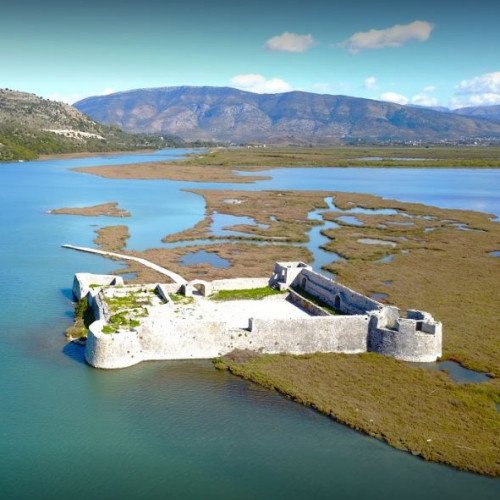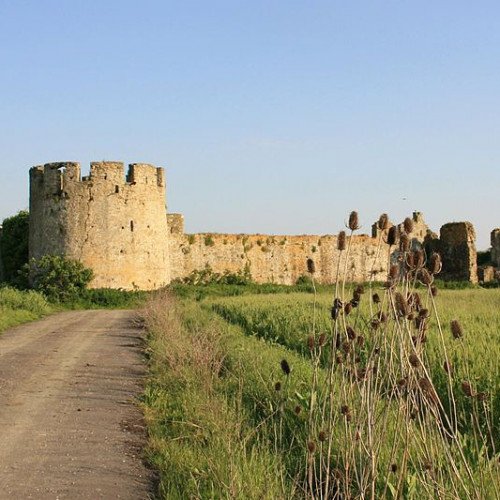Castles of "Albania" ALI PASHA CASTLE vs BASHTOVË FORTRESS

ALI PASHA CASTLE
Ali Pasha Castle (Albanian: Kalaja e Ali Pashës) is a castle in Albania. It is named after Ali Pasha of Tepelenë who resided there until 1820. The current fortress was rebuilt in 1819 from its surface with 3 towers. Until 1820 it was the second residence of Ali Pashe Tepelena. Built under Venetian dominion in the late 15th or early 16th century, it provided a stronghold for the Venetians on Corfu to exploit fishing, grazing, olives and timber in and around Butrint. The castle was the centrepiece of numerous conflicts with the burgeoning Ottoman Empire, and changed hands on several occasions. It was destroyed by a retreating French army in 1798 to prevent it falling into the hands of Ali Pasha. The fortification attributed to Ali Pasha at Butrint lies some 2.4 kilometres (1.5 mi) due west at the mouth of the Vivari Channel. This in itself began life in the late 17th or early 18th century as a fortified estate centre belonging to a Corfiote family that farmed land on the plains south of the ancient city. Ali Pasha seized control of the structure around 1804 and carried out a series of defensive improvements including the installation of gun batteries. Given its small size it is unlikely that the fort functioned as anything more than a control over access from the sea to Butrint, and it can not be compared to Ali's more redoubtable fortresses in the region at Tepelena, Gjirokastra and Ioannina.
Statistics for this Xoptio

BASHTOVË FORTRESS
The Fortress of Bashtovë (Albanian: Kalaja e Bashtovës) is a medieval quadrangular fortress located close to the outflow of the Shkumbin River into the Adriatic Sea in Central Albania. It is part of the tentative list of Albania in order to qualify for inclusion in the UNESCO World Heritage Site list. The fortress is built on a fertile flat ground east of the mouth of the Shkumbin River. The ruins are located some 2 kilometres (1.2 mi) from the village of Vilë-Boshtovë in Tirana County. By air, it is 36 kilometres (22 miles) north of Fier, 20 kilometres (12 miles) northwest of Lushnjë, 15 kilometres (9.3 miles) south of Kavajë and 40 kilometres (25 miles) southwest of Tirana. Previously in the Middle Ages, the region of Boshtovë was known as a trade harbor and otherwise centre for the export of grains. The origin of the fortress has been for some time a matter of dispute among historians. The initial fortress was constructed during the time when the region was part of the Venetian Empire as according to Gjerak Karaiskaj.However, Alain Ducellier has asserted that the Venetians have built over an existing former structure, which dates back to the 6th century, when the area was under the Byzantine Empire during the Justinian dynasty. The fortress is a rectangular structure oriented to the north-south direction. There are three entrances, from which there still are well-preserved archaeological traces they were placed at the northern, western and eastern walls. The walls are 9 metres (30 ft) high and comprise a roughly 60 by 90 metres (200 by 300 ft) interior. In the north and east, there stands round towers each of them 12 metres (39 ft) high.